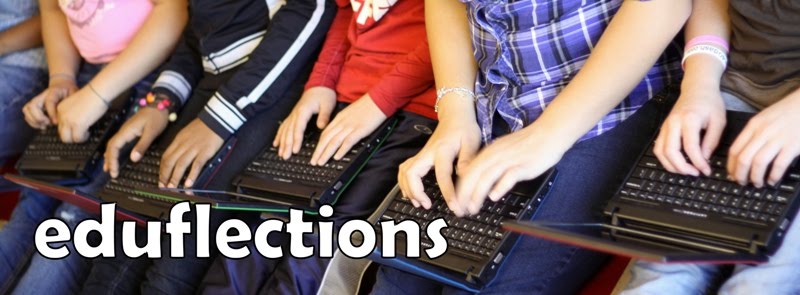Of course, my learners provided me with plenty of food for thought. This year as we were ensconced in the Global Read Aloud, one of my students asked me if we were going to be studying any mysteries this year. Since I am in a new school and I let my students lead my instructional plans, I responded to her that I wasn't sure. I asked, "What do you have in mind?" As she began speaking, slowly other students joined the conversation. What I found interesting was that in their excitement they not only made suggestions about learning activities but also tied in learning standards. Within ten minutes, eighteen of my students had joined the conversation and collaboratively planned a five week mystery unit. I had the pleasure of watching it take shape as they took notes, referred to resources on their devices, and discussed whether something promoted "real learning" or not.
Let's see what happens when students are given the ability to design their learning and how that impacts their motivation to learn. Fasten your seatbelt, here is a (brief) synopsis of their mystery unit.
With the guidance of our school librarian, we selected the book The London Eye Mystery, by Siobhan Dowd, as our main text, and used The Westing Game by Ellen Raskin, as a parallel text through their independent reading. Using both books opened many opportunities for students to deeply compare and contrast plot, character, setting, theme, audience, purpose, and the craft of writing. Since many of my students had little background knowledge of British culture or history, that opened up opportunities to explore nonfiction texts to enhance their understanding of the novel, the framework where the story played out. This led to them exploring London through virtual field trips and publishing Travel Guides using Skitch.
 Many British terms, phrases, and colloquialisms were included in the The London Eye Mystery; so, my students had the opportunity to put their skills at using context clues to work to determine the meaning of the text. They documented this learning on one of our Idea Walls to form a working vocabulary bank they called "Flibbertigibbets and Whatnots." This made them think about perspective, point of view, word choice, and an audience's background knowledge when composing a piece of writing.
Many British terms, phrases, and colloquialisms were included in the The London Eye Mystery; so, my students had the opportunity to put their skills at using context clues to work to determine the meaning of the text. They documented this learning on one of our Idea Walls to form a working vocabulary bank they called "Flibbertigibbets and Whatnots." This made them think about perspective, point of view, word choice, and an audience's background knowledge when composing a piece of writing.As they analyzed the structure of a mystery, my learners also stretched their problem solving and critical analysis through image prompts and whodunit mystery puzzles. Students honed their debating/communication skills as they had to justify and support their claims in the solutions to these mysteries. They used the ability to dig deeply into the text of The London Eye Mystery to make inferences to create their "mystery motherboard" on our large Idea Wall. This wall grew and changed as we moved through the novel and students began to follow the clues in solving the mystery.
In addition to participating in several Mystery Skypes, my students put to test their ability to analyze text in their pursuit of truth in investigating urban legends using a wide variety of digital and graphic sources. They took a topic of choice, became experts on that topic, synthesized that information, and drew conclusions on whether they were fact or fiction. Then, they took their learning and published "tabloids" on Smore providing resources to support their conclusions.
My students designed their exam and rubric, a complex, interactive Internet mystery, which put the reader to the task of using problem-solving and deductive skills in order to solve the puzzling question. And as a final culminating activity, the student each designed a complex Clue character. Their character had to have a background story, a sense of what motivates them to take action, family/friends/colleagues, and events that shaped who they are. Then the students came in character and we played Clue Queue (a Clue tournament).
Motivation? Is there any doubt that the students were excited each day to learn? My learners would come into class with additional ideas to enhance their learning and the learning of their peers. They took the learning beyond the classroom walls, often writing, blogging, researching, and creating something new to share with their fellow detectives the next day. In fact, as the unit came to an end, the students all commented that the time was too short. They wanted more time. More time? Were the students just "playing at school?" Absolutely not! These students dug deeply into their text. They found a meaningful way to connect the standards to their interests and needs. Did they have fun? There is no doubt about that. But that fun was enveloped in deep and meaningful learning that they not only shared with one another, but also with our digital tools to their global peers.
Is student motivation a mystery? No. Students know exactly what they enjoy and what will make learning in the classroom relevant for them inside and outside the classroom walls. All we have to do is ask and listen.



I really enjoy reading about your classroom experiences. Too many schools are now shackled with pacing guides, false PLCs and little place for creativity such as this. Thank you for glimpses of authenticity.
ReplyDelete